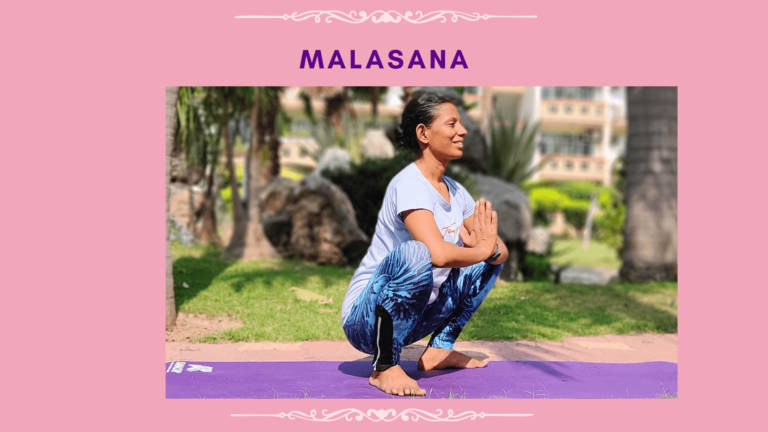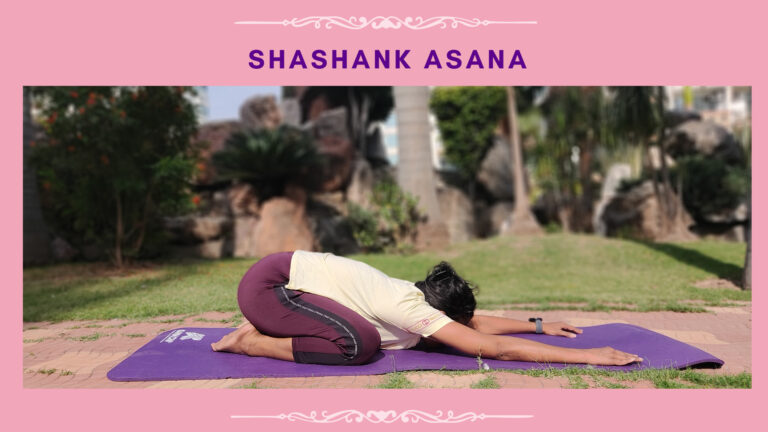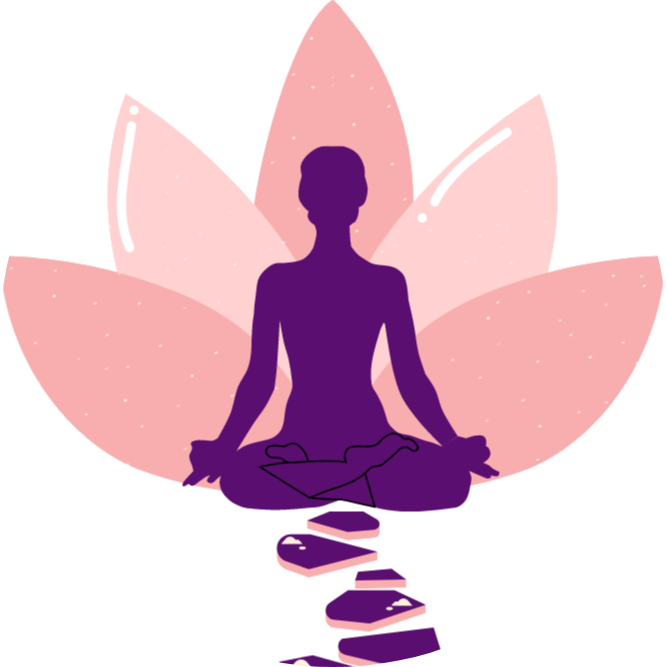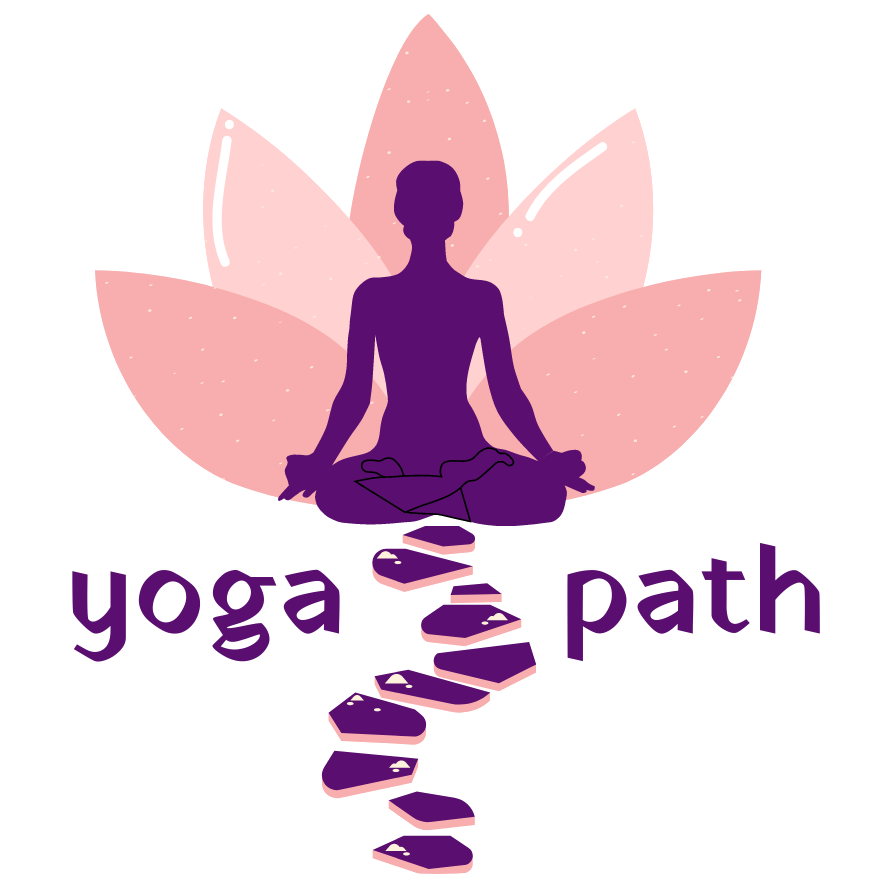Treat Piles & Fissures
ASANAS FOR PILES & FISSURES
In pain from piles and fissures?
Give yoga a try.
We know managing Piles, Fissures and Haemorrhoids is painful. Fortunately, there are Asanas you can do to help treat and prevent these swollen veins located around the anus or in this region.
Yoga has several benefits for the body for people of all ages. Yoga for Piles is an extremely beneficial therapy as it stretches and contracts the muscles involved and offers pain relief along with long-lasting benefits. Regular practise of Asanas can also help improve your digestive health and encourage regular bowel movements, which further ensures deep healing.
Check out these eight asanas that aim in strengthening the rectal tissues along with your abdominal and sphincter muscles to relieve swelling and inflammation and get you started on your way to healing.

Sitting Position
Malasana meaning Garland Pose
In this asana, squat with your feet as close together as possible. Keep your heels on the floor if you can; or support them on a folded mat.
Open out your thighs slightly wider than your torso. Exhaling, lean your torso forward and fit your elbows snugly between your thighs.
Press your elbows against your inner knees, bringing your palms together in Anjali Mudra (Namaste) – this will help lengthen your front torso.
Hold the position for 30 seconds to 1 minute, then inhale, straighten the knees, and stand up.
Benefits:
Strengthens pelvic floor Increases circulation to the pelvic region benefiting those suffering from PCOS – this mostly on the legs, especially on the hips and thighs Enhances the flow of blood and ensures good elasticity in your hips, thighs, groin and ankles Opens hip flexibility and strengthens leg muscles and increases flexibility Tones the abdominal muscles and improves the function of Colon to help with the elimination of waste Increases circulation and blood flow in the pelvis helping in regulating hormones
Seated Asana – Forward bending
Manduka meaning Frog
- In this pose, as you inhale in 3 seconds, form a fist folding the thumb inside the fingers and place it below and on both sides of your navel with elbows pointed out.
- As you exhale in 3 seconds, extend the spine, raise the chest upwards and then lower the torso down. In doing so, the fists are pressed deep in the abdomen in the navel area, the fists are still standing on either side of the navel.
- Lower the head down as much as you can to the floor without lifting thighs off the heel.
- Hold this pose for 1minute.
- Slowly you can increase to 3-5 minutes
Contraindications:
People suffering from Peptic or Duodenal Ulcer, severe Back Pain and Cardiac problem, abdominal surgery should avoid this exercise.
Knee pain patients, those with ankle injuries,
High blood pressure, Insomnia, Migraine and pregnant women should refrain.
Benefits:
This pose is beneficial to all organs of the body.
Relief from diabetes, digestive disorders and constipation.
Improves the flexibility and mobility of the knee and ankle joints.
Tones muscles of the shoulder and abdomen.
Regular practice of this pose increases your lung capacity.
Beneficial for people suffering from ailments of the pancreas and the heart.
Helps reduce fat from thighs, belly and hips.
Pawanmuktasana
Supine / Lying down Asana
Pawan meaning gas, Mukta meaning releasing. Pawanmuktasana is an anti-flatus pose, excellent for releasing gas.
In this asana, lie supine at full length on a mat, feet together and hands resting beside the body. Relax mind and calm and body. Inhale normally.
Exhaling in 3 seconds, bend both the legs at the knee and draw it towards the abdomen. Wrap the forearms just below the knee (the fingers clasping the opposite elbows), and keep it firmly pressed against the chest. Ensure to rest the head and neck on the floor.
Maintain this pose for 6 seconds. Inhaling, in 3 seconds, gently release the clasped hands and slowly straighten the leg to bring it back to the starting position. You can hold position for 30 seconds and increase to 2 minutes.
Contraindications:
Abdominal inflammation, Cardiac conditions, Hernia, Piles, Menstruation and Pregnancy.
Benefits:
This posture gives significant relief to flatulence by quickening the movement and expulsion of the intestinal flatus.
Favourable improvement in cases of flabby abdomen, sub-normal functions of the abdominal viscera and pelvic organs.
Relief in case of chronic constipation and sluggish liver.
It sharpens the brain, improves concentration, calms you and reduces mental problems.
Shoulder muscles, triceps, gluteus maximus and hamstrings are stretched.
Offers deep internal pressure massage.
Inculcates a feeling of “letting go”.
Viparit Karni
Supine Pose – Lying down with legs up against a wall
The pose described here is a passive, supported variation of the shoulder stand-like Viparit Karni. You’ll also need to rest your legs vertically on a wall or similar upright support.
Sit sideways with your right side against the wall, lie down lowering your back and head on the floor.
Exhale and, slowly slide your legs up onto the wall sideways while your back, shoulders and head are down on the floor.
Lift and release the base of your skull away from the back of your neck and soften your throat. Don’t push your chin against your sternum.
Open your shoulder blades away from the spine and release your hands and arms out to your sides, palms up.
Keep your legs straight. Feel the weight of your legs and belly deeply into your torso, toward the back of the pelvis. Soften your eyes and turn them down to look into your heart.
Stay in this pose for 1 minute you can increase to 15 minutes. Then bend your legs, and turn to the side.
Stay on your side for a few breaths, and come up to sitting with an exhalation.
Contraindications:
Glaucoma and serious eye problems, Back injury or problems or Neck injury or problems. Not to be done during Menstruation.
Benefits:
Helps ease Anxiety, mild Depression and calms the mind.
Heals Migraines, Headaches, Arthritis, Digestive problems, High and low blood pressure, Respiratory ailments, Uinary disorders, Varicose veins, Piles, Fissures and relaxes cramped legs and feet and reduces Insomnia.
Benefits circulation in the lower back and the abdomen region and its internal organs.
In women, it eases Menstrual cramps, Premenstrual syndrome and Menopause.
Benefits as described in Yoga Philosophy:
- “You will become adept in all the worlds and will not perish even at world dissolution (pralaya)” – Gheranda Samhita 3.36
- Hatha Yoga Pradipika 3.82 states grey hairs and wrinkles reduce

Inversion Pose
‘Sarva Anga’ – means full body. It is beneficial for all the systems of the body, especially the head that houses the brain.
Lie supine on a mat with your feet together and hands at the sides. While exhaling, raise your legs up together, toes to point towards the ceiling. Keep knees straight. Use your hands to support your body at the back the chin is set against the chest.
Maintain this pose for a few seconds or as long as convenient but not longer than two minutes, the breathing slow, rhythmic and natural.
Slowly bend your knees, then, as you inhale, lower your hips towards the mat, releasing your hands from back, lower the legs slowly without jerking the head.
Take a few deep breaths.
Precautions To Be Taken during Performance of This Asana:
Avoid any possible extreme strain. It is best to attempt this asana first in stages and attempt this asana only after a few weeks of preparation.
What needs emphasis is the fact that this pose should never be attempted after any form of rigorous Exercises because the rush of blood to the brain at this stage might do more harm than good. Place importance on the position and comfort of the neck.
Contraindications:
Hypertension, cardiac ailments, Pregnancy, Respiratory disorders, Cervical spondylosis, spinal problems, neck injuries or trauma, High myopia, glaucoma, serious eye disorders.
Benefits:
Physical
It strengthens your arms and shoulders.
It keeps your spine flexible.
It nourishes your brain with more blood.
It improves the functioning of your thyroid, parathyroid, and pituitary glands.
There are favourable changes in vasomotor ability due to the increased interchange of blood in the upper part of the body, especially the thorax, the neck, and the head.
Relief from congestion, through the rapid drainage of venous blood, in the abdominal and pelvic regions.
There is a good healing effect of gravity on the various organs of your body above the waist, including the endocrine glands.
It helps alleviate varicose veins.
It is helpful in constipation, dyspepsia, headache, giddiness, neurasthenia, functional disorders of the eye, the ear, the nose and the throat, general and sexual debility. It helps alleviate piles and fissures.
This is one of the most effective asanas for the increase of blood flow towards your brain., it not only impacts the whole body it makes your mind alert giving a feeling of self-confidence and self-reliance.
Psychological
It relieves stress as it calms your brain and nervous system.
It helps to balance the moods and calms your mind.
It increases your confidence.
Muscles Involved:
Trunk flexors and wrist extensors.
Flexors and extensors of the lower limbs.
Extensors of the neck and erector spinae.
Isometric contraction of the hip and knee.

Seated Pose – Half Spinal Twist
Ardha Matsyendrasana is named after Rishi Matsyendranath who was a Hatha Yoga proponent and his favourite meditation asana was a full spinal twist itt was simplified so that everyone could also practise which we know as Ardha Matsyendrasana.
In this asana, sit on the mat with the legs stretched out straight in front of you, keeping the feet together and the spine erect. Bend the left leg, place the left heel beside the right hip. Take the right leg over the left knee place the right foot close to the left knee. Place the left hand on the right knee and the right hand behind you. Twisting the waist, shoulders and neck to the right look over the right shoulder. Keep the spine extended straight and erect. Hold while breathing in and out. Release the right hand first (the hand behind you), unwind the waist, then chest and the neck and sit up relaxed and straight. Repeat on the other side.
Contraindications:
Hernia, peptic, ulcer and severe spinal problem, as well as people who went for abdominal, heart or brain surgery. Pregnant women should not twist.
Benefits:
Increases the elasticity of the spine makes it supple which further help to relieve stiffness between the vertebrae and prevent back pain.
Benefits people with a mild slip disc problem.
Opens the chest and increases the oxygen supply to the lungs.
Helps to increase the digestive secretions by opening the chest.
Helps to strengthen abdomen, chest, spine, arms and hips
Loosens up the hip joints by relieving stiffness.
Increases the blood circulation to the pelvic region as well as enhance the functions of the reproductive system.
Helps heal piles and fissures due to good blood circulation.
Helps to prevent menstrual disorders and urinary tract related problems.
Helps relieve diabetics. The deep stretch and intense breathing work activates the pancreas by massaging and stimulating it.

Prone Position – Forward Bend
Contraindications:
Vertigo, high blood pressure, knee problems or slipped disc.
Pregnant women should refrain from practising this asana.
Benefits:
Massages the abdominal organs, muscles and organs of the pelvic region.
Improves digestion and alleviates constipation.
Relaxes the spine and all muscles of back.
Improves functioning of adrenal glands.
Stretches back muscles and strengthens it.
Enhances the health of reproductive organs.
Relaxes sciatica nerve.
Improves blood supply to the head and therefore nourishes the eyes and all brain functions.
Helps to relieve fatigue and promotes concentration.

Mudra
Also called the horse mudra as this is done by a horse while defecating and many times during the day.
In this mudra, contract the anal sphincter muscle rhythmically to strengthen the pelvic organs (bladder, uterus, cervix, vagina, and rectum). Unlike most of the hasta mudras, in this mudra, there is no active involvement of hands or fingers.
The contraction action of anal sphincter muscle in Ashwini mudra reverses the energy flow direction. Therefore, the energy that normally flows down and out of the body (Apana Vayu) now starts flowing up into internal organs. When Apana Vayu fills with full capacity in lower organs, the pressure developed at the bottom of Sushmana Nadi which makes Prana start flowing through it. Obstacle free flow of Prana through Sushmana Nadi enlightens a person and it’s the sign of awakened kundalini.
To practise this asana, sit in a meditative pose like Lotus pose, Easy pose, or Vajrasana and take a few deep breaths to fill air into the stomach. Ashwini mudra can be practised in other asanas also those that bring hips together, like the upward facing dog.
To begin, inhale fully and hold the breath in, then contract your anal sphincter muscles. Contracting anal sphincter muscle will feel like as you’re holding in faeces (imaginary). Now as you are contracting the anal sphincter muscles, lift the muscles more inward and up. Contract and pull up muscle in this manner for 5 seconds and then release the pressure.
Again contract, pull up and release slowly. Do it for 10 to 15 rounds in the beginning.
Contraindications:
Recent abdominal surgery and Anal fistula
Benefits:
Helps you better control your autonomic nervous system.
Urinary incontinence, and bed-wetting in children or nightfall can be prevented by doing Ashwini mudra daily. It strengthens the weak muscles of the pelvic floor.
Effective exercise in the case of piles (hemorrhoids). It increases blood circulation in the anus and treats any swollen veins in the lowest part of your rectum. For piles patient, Ashwini mudra should be performed in an inverted pose to get relief from the piles’ irritation.
Regulates the Prostate gland and avoids any symptoms of Prostate Problems.
In the case of Irritable bowel syndrome (IBS), Ashwini mudra is very helpful, especially when done in Vajrasana. It treats stomach pain, flatulence, diarrhea, and constipation.
Since it cures problems with digestion leads to glowing skin.
Helps in sexual dysfunctions.
It purifies the Nadis (energy channels)and in turn awakening of kundalini energy.
After and before pregnancy, Ashwini mudra can be performed to strengthen the pelvic floor muscle that gives support to the growing weight of the fetus.
Stagnant blood from abdomen and lower extremities is pulled up to the heart, which once purified ,the heart pumps fresh blood to these parts of the body.

